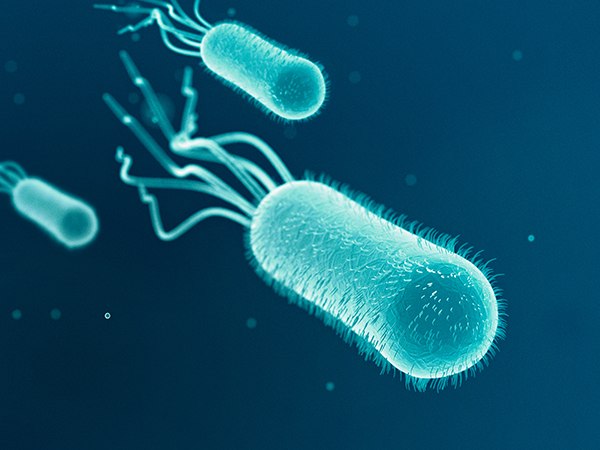E. coli Detection for Food Safety

Figure 1.Scanning electron micrograph of Escherichia coli
To the food scientists in microbiology and analytical testing labs working tirelessly behind the scenes to keep us all safe from E. coli poisoning every day, our scientists and engineers are committed to uniquely support your critical work with proven regulatory expertise and a dedicated portfolio of the most trusted tools and services covering R&D and manufacturing QC.
Section Overview
- Escherichia coli Detection for Food and Beverage Safety: Rapid Testing Solutions and Regulatory Guidance to Avoid Contamination
- Traditional Testing Methods for E. coli Bacteria Detection in Food Production, Water, and Environmental Monitoring
- Ready-to-use Agar Plates and Liquid Media for the Microbiological Control of Water
- Alternative and Rapid Screening Methods
Escherichia coli detection for food and beverage safety: Rapid testing solutions and regulatory guidance to avoid contamination
According to the U.S. Center for Disease Control (CDC), the large and diverse bacterial group of gram-positive, rod shaped Escherichia coli, (E. coli) contain numerous mammal-associated strains with many harmless, some beneficial, and some harmful to human health including serious food poisoning infections. Pathogenic E. coli strains (6 pathotypes) typically cause gastrointestinal distress and are associated with diarrhea and collectively are referred to as diarrheagenic E. coli, with the STEC pathotype often in the news as the culprit in food-borne illness outbreaks.
- Shiga toxin-producing E. coli (STEC) aka Verocytotoxin-producing E. coli (VTEC) or enterohemorrhagic E. coli (EHEC).
- Enterotoxigenic E. coli (ETEC)
- Enteropathogenic E. coli (EPEC)
- Enteroaggregative E. coli (EAEC)
- Enteroinvasive E. coli (EIEC)
- Diffusely adherent E. coli (DAEC)
Among the pathogenic E. coli, Verotoxin-forming strains (STEC or VTEC) have gained importance in recent years. The group of enterohaemorrhagic E. coli (EHEC) with its highly pathogenic serovar O157:H7 strain is particularly interesting in this respect (see table of common pathogenic E. coli strains). The main sources of infection are contaminated, raw or insufficiently heated foods of animal origin, such as meat and dairy products. The reservoir for EHEC is the gut of ruminants. The microorganisms can enter food during the processing of meat and dairy products if hygienic conditions are inadequate. Certain foods and beverages are more likely to contain these dangerous strains of E. coli that even in small doses can cause vomiting, bloody diarrhea and severe abdominal cramps. Children, the elderly and people with suppressed immune systems could then develop hemolytic uremic syndrome, causing kidney failure and potentially death. The drastic increase in the incidence of food contamination caused by E. coli O157 demands reliable and rapid methods of detection.
Since 2012, the Food Safety and Inspection Service (FSIS) is routinely testing for six additional STECs (O26, O45, O103, O111, O121, and O145), beyond O157 :H7 in raw beef processing.
We offer a variety of products for the growth, detection, and analysis of E. coli in food and beverage products as well as the processing environment including Milli-Q® best-in-class laboratory water, standard-setting Millipore® solutions for preparation, separation, filtration and monitoring, and high-precision Supelco® analytical reagents, columns and CRMs. Below you will find an overview of all our E. coli testing solutions. Don’t hesitate to contact us if you have questions.
References
To continue reading please sign in or create an account.
Don't Have An Account?